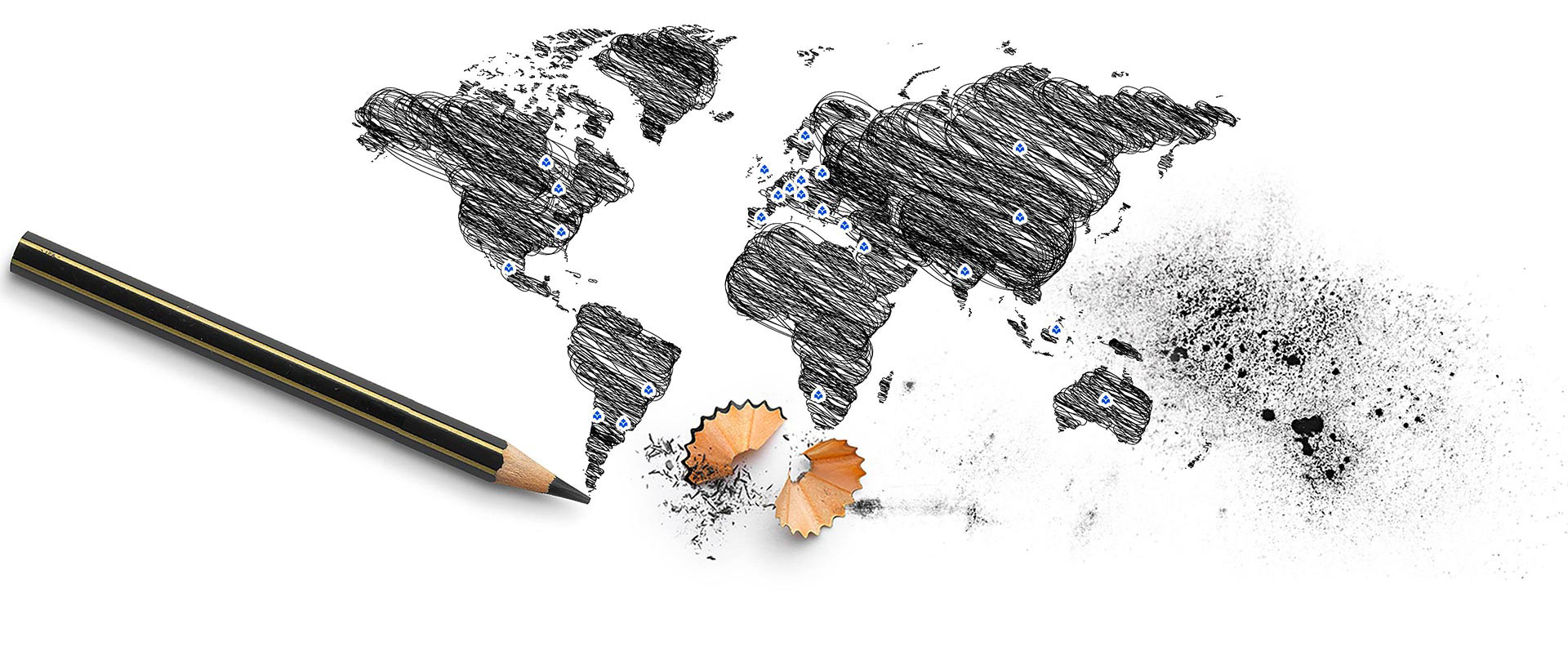Where we are
From 1920 to the present day, F.I.L.A. and its products have won over millions of fans from every corner of the WORLD. Discover the companies of the F.I.L.A. Group in the world.
- ITALY
- FRANCE
- GERMANY
- GREECE
- POLAND
- UNITED KINGDOM
- RUSSIA
- SPAIN
- SWEDEN
- SWITZERLAND
- TURKEY
- SOUTH AFRICA
- ISRAEL
F.I.L.A. S.p.A.
F.I.L.A. Fabbrica Italiana Lapis ed Affini S.p.A. – Pero (Milan)
Headquarters
F.I.L.A. Fabbrica Italiana Lapis ed Affini S.p.A. – Rufina (Florence)
Production site
Year of Establishment: 1920
Mediglia (Milan)
Production and Sales
Year of Establishment: 1923
Joined the F.I.L.A. Group in: 2014
http://www.maimeri.it
Historical highlights
Maimeri has been producing colours for the Fine Arts for 92 years and is renowned all over the world for the quality of the raw materials used to make its products, offering each artist the most suitable tool for his creation. Maimeri was founded in Milan in 1923, fruit of the intuition of Gianni Maimeri, artist and man of many talents, and the hard work of his brother Carlo, an industrial chemist. The problems caused by the war, the difficult revival of the construction business, the economic awakening of the 1960s, with new ideas and the globalisation of the markets were the distinguishing features of the pathway followed by the company Fratelli Maimeri & C. Srl, which became harder to travel when its founder, Gianni, passed away in 1951. The fate of the company fell into the hands of his son Leone, a man with great charisma and initiative to whom the company owes the delicate management of its transformation from a small entity into the dynamic international industry it is today. It was then Gianni Maimeri, son of Leone and grandson of the founder, after whom he was named, who transformed the company into a joint-stock company, combining his deep passion for family with the rapid company growth. The company is still deeply attached to the Maimeri Foundation, created in 1997 in accordance with Gianni Maimeri’s wishes: an institution created to familiarise the world with the poetry and the artistic thought of the painter who founded the company, and the original link between Art and Industry. Maimeri produces all the colours in Italy because it has chosen to do so, in honour of quality and as a sign of its love for its territory and its tradition.
Omyacolor S.A.
Saint-Germain-La-Ville
Production site
Year of Establishment: 1960
Joined the F.I.L.A. Group in: 2000
Merged with CANSON in: 2019
Historical highlights
In 1960 the OMYA Group (specialist in chalk extraction) acquires the Branjon company (chalk writing’s manufacturer), and named Omyacolor. At the end of 80s, Omyacolor diversified its business by producing play dough and developed its range by launching the production of paint and colouring products, thanks to the acquisition of the Italian BOFIM.
After the acquisition of BIB, a glue’s manufacturer, in 1992, and of the company Pierrefeu, near Le Havre (France), in 1994, Omyacolor became OMYACOLOR SA to join the group F.I.L.A. in 2000. It merged with CANSON in 2019.
CANSON SAS
ANNONAY Cedex
Production site and sales
www.canson.com
Year of Establishment: 1557
Joined the F.I.L.A. Group in: 2016
History
The year was 1557, when the famous Montgolfier family established the Canson Paper mills. After centuries, Canson continues to carry on a spirit of invention and excellence like no other paper company, by combining the oldest manufacturing process with the most innovative technologies. Since its origins, Canson has been a big supporter of the Arts.
Canson constantly strives to make “creating adventure” possible for everyone. For example, did you know that Canson was the inventor of the first Hot Air Balloon, which launched in 1782 and was made with Canson paper!
As a worldwide leader in the fine art market, Canson supports artists, designers, architects, illustrators and students by producing a large assortment of superior quality papers.
Today Canson is producing art paper for: drawing, tracing, pastel, watercolour, oil, acrylic, printmaking, and even digital printing.
FILA-ARCHES sas
Arches
Production site and sales
Year of Establishment: 1492
Joined the F.I.L.A. Group in: 2020
www.arches-papers.com
History
When Christopher Columbus set out for America in 1492, master papermakers were already hand making paper in the ARCHES® paper mill located in the Vosges region of France. Drawing on age-old knowhow, the master papermakers have remained faithful to the original spirit of the paper mill. ARCHES® holds today the prestigious “Entreprise du Patrimoine Vivant” (Living Heritage Company) approval, in recognition of its ancestral know-how in the manufacturing of top-quality paper. The ARCHES® paper mill is the only one in France to manufacture all its fine art and printing papers using a cylinder mould. This traditional method, combined with the use of a natural raw material, cotton, makes it possible to produce watermarked paper offering very high quality: stable (deforming little when wet), with natural and harmonious grain, and deckle edges. ARCHES® is also very well-known for its watercolour paper gelatin-sized “to the core”. This manufacturing process – unique in the world – gives the paper inimitable qualities. The range includes paper for the Fine Art (watercolour, oil and drawing), art publishers (prints, books, photographs etc.) and papers intended for printing and writing. For over five centuries, famous artists and men of letters have overwhelmingly chosen ARCHES® papers to produce their works on the most sublime of media – and one that guarantees their longevity.
FILA BENELUX SA
Zellik (Belgium)
Commercial
Year of Establishment: 2016
Johann Froescheis Lyra-Bleitstitift-Fabrik GmbH&Co-KG (“Lyra KG”)
Nuremberg
Production site and sales
Year of Establishment: 1806
Joined the F.I.L.A. Group in: 2008
https://www.fila.it/de/de/
Historical highlights
A legendary brand founded in 1806 by Johann Froescheis in Nuremberg, boasting a history that spans two centuries of quality and continuous innovation. LYRA is one of the oldest brands of pencils in the world, thanks to the inventive spirit of its founder and his successors who determined its success by making crucial choices, such as crossing over to mass production in 1848 and transferring the company to Grossweidenmühle (Nuremberg) in 1860. In 1868, the symbol LYRA was registered as a brand, an entirely new concept for the industry in that period. The genius of Froescheis combined later with the commercial talent of Karl Grasser catapulted the Company into new markets. At the beginning of 1900, Lyra employed 500 workers and produced 53 million pencils and fountain pens. In 1932 the company opened a production facility in Italy. Although 85% of the Company was razed to the ground by the bombings during the Second World War, after a difficult post-war period, Lyra returned to its ancient splendour, solid and international, and recognised all over the world thanks to brands and products such as Lyra Orlow, the true flagship product of Lyra, but also Polycolor, Lyrato, and in recent times, Ferby and Groove, the pencils with an ergonomic grip. Lyra became “Italian” in 2008, when it joined the large creative family of F.I.L.A.
Lukas-Nerchau Gmbh
Düsseldorf
Sales Branch
Year of Establishment: 1862
Joined the F.I.L.A. Group in: 2016
Historical highlights
LUKAS has been producing quality artists’ products since 1862, when one of the first artists’ watercolours made in Germany was developed according to the recipe of the company’s founder Dr. Fr. Schoenfeld. In 1964, LUKAS became the first manufacturer to produce artists’ acrylic colours in mainland Europe. From the outset, Dr. Fr. Schoenfeld has instilled a commitment to quality, without compromise. Our recipes have been optimally formulated in accordance with the most modern painting techniques and using only the very best pigments and binders. LUKAS’ strive for superior quality has led many well-known artists from Van Gogh and Achenbach to Beuys and Baselitz to trust the quality of their colours throughout the years. One of LUKAS’ best-known employees was Professor Hans-Gert Müller, editor of the 12th to 15th editions of the Max-Doerner-Classics, which is considered as the bible of painting techniques in the German speaking countries. The traditional company philosophy for LUKAS Artists’ Colours stands to this day as; „Price-conscious and uncompromising in quality“. Our first priority is to serve all painters, restorers, and artists alike.
Founded in 1834, Nerchau, which has always put innovation, quality and safety at the forfront, is in the house LUKAS-NERCHAU the particular brand for hobby and school paints as well as for artists’ acrylics.
Lukas-Nerchau has been holding the Bob Ross licence since 2004. Bob Ross offers a unique system which allows everyone to create impressive landscape and flower paintings in a very short period of time.
In 2013, Lukas-Nerchau was taken-over by Daler-Rowney Ltd.
FILA Hellas SA
Thessaloniki
Sales Branch
Year of Establishment: 2014
FILA Polska Sp. Zo.o
Krakow (Poland)
Sales Branch
Year of Establishment: 2015
Daler-Rowney Ltd.
Bracknell, Berkshire
Production Site & Sales
Year of Establishment: 1783
Joined the F.I.L.A. Group in: 2016
Historical highlights
The Rowney Company was established in 1783 when Richard and Thomas Rowney moved to central London and opened premises selling perfumes and wig powder, before focussing their business on the development of artists’ colours. They achieved notable success, supplying famous artists such as Constable and Turner, and more recently Sir Peter Blake and Bridget Riley.
The Daler Board company, a leading UK manufacturer of paper and board, bought the George Rowney Company in 1983, to create Daler-Rowney. Shortly after, in 1994, Daler-Rowney acquired Robert Simmons, a leading brush manufacturer, creating for the group synergies allowing for the manufacturing of colours, surfaces, and brushes within the groups’ manufacturing facilities in the United Kingdom and the Dominican Republic. Daler-Rowney acquired Cachet in 2006, a market leader of hardback books. Flagship brands in the Daler-Rowney portfolio include, System3, Georgian, FW Inks, Langton, Cachet, Robert Simmons, Graduate, and Simply.
In 2013, Daler-Rowney acquired Lukas-Nerchau GMBH, founded in Germany by Dr. Fr. Schoenfeld in 1862. Trusted by artists including Van Gogh, Lukas has been at the forefront of colour development in Germany, guided by the expertise of employees such as Professor Hans-Gert Müller, editor of the 12th to 15th editions of the Max-Doerner-Classics, which is considered the bible of painting techniques in the German speaking countries.
St Cuthberts Mill Ltd
Wells, Somerset
Production & Sales
Foundation’s year: the production of ST Cuthberts mill dates from the early ‘700.
Joined the F.I.L.A. Group in: 2016
https://www.stcuthbertsmill.com/
Background
The paper-processing technique used by St Cuthberts dates back to 18th century. At that time the company reality was still far away, the production took place in a small site surrounded by green fields and quiet lanes of the English countryside, in the beautiful county of Somerset. Even today, albeit expanded, the headquarter is located by the ancient Cathedral City of Wells, which is close to the mystic town of Glastonbury (the legendary resting place of King Arthur), and the historic City of Bath, famous for its magnificent Roman baths.
Actually, St. Cuthberts is one of the main company in the global paper industry and it produces very high quality paper for fine arts through the use of a particular technique, using one of the few remaining cylinder mould machines left in the world, dating back to 1907.
FILA Stationary O.O.O.
Moscow
Sales Branch
Year of Establishment: 2013
FILA IBERIA S.L.
Barcelona
FILA Nordic AB
Kungälv
Sales Branch
Year of Establishment: 1999
Joined the F.I.L.A. Group in: 2008
FILA Stationary and Office Equipment Industry Ltd. Co.
Istanbul
Sales Branch
Year of Establishment: 2011
Fila SA (Pty) Ltd
Cape Town
Year of Establishment: 2014
Fila Art and Craft co,Ltd
Moshav Beni-Zion
Sales Branch
Year of Establishment: 2018
- CANADA
- USA
- MEXICO
- BRASIL
- CHILE
- ARGENTINA
- DOMINICAN-REPUBLIC
Dixon Ticonderoga Inc.
Ontario
Sales Branch
Origins: 1931 – Dixon Pencil Company, Toronto
Joined the F.I.L.A. Group in: 2005
Dixon Ticonderoga Company
Appleton, WI
Sales Branch
Origins: 1827 – Joseph Dixon Crucible Factory, Salem Massachusetts
Joined the F.I.L.A. Group in: 2005
https://dixonticonderogacompany.com/
Historical highlights
Dixon Ticonderoga Company holds the distinction of being one of the oldest companies in the United States, with roots dating back to 1795 during the term of our first president, George Washington. One founder, Joseph Dixon, contributed a great deal to our young progress. Joseph Dixon developed the first pencil in the United States. Joseph Dixon was responsible for the major development of the U.S. graphite industry and instrumental in starting the steel industry in the United States.
In 1827, Joseph Dixon established his firm in North Salem, Massachusetts, using graphite to manufacture crucibles, the highly refractory vessels used for melting metals and minerals. Dixon also explored other uses for graphite, and discovered its merit as a stove polish, a lubricant, a base paint, and as a lead in pencils. In 1847, Dixon established a new factory in Jersey City to manufacture “Crucibles, Stove Polish and Pencils” as the sign on the building read.
In 1859 a new firm, Joseph Dixon & Company, was formed when Dixon’s son-in-law, Orestes Cleveland, became a partner, and they soon acquired the extensive mining property, mills and water power of the American Graphite Company at Ticonderoga, New York. At that time, Ticonderoga became a registered trademark of the company.
In 1913, the Joseph Dixon Crucible Company introduced the Ticonderoga pencil, named for the site of the graphite mine in New York. The Ticonderoga’s national advertising campaign focused on the patriotic imagery of Ethen Allen and the battle of Fort Ticonderoga, featuring paintings by such noted American artists as N.C. Wyeth, Harvey Dunn, Tom Lovell and F.C. Yohn. Norman Rockwell also created several paintings for the Ticonderoga campaign. One of these paintings is proudly displayed at Dixon’s corporate office in Lake Mary, FL.
The Joseph Dixon Crucible Co. continued to prosper throughout the 20th century, growing through a series of mergers and acquisitions. In 1957, hoping to supplement its line of lead pencils, Dixon merged with the American Crayon Co., which was founded by Louis Prang. Louis Prang was a world-renowned chromolithographer and art educator who introduced art education into the American school system. He was also known as the father of the American Christmas card. His name is engraved on the base of the Statue of Liberty as one of the most contributing immigrants to come to the U.S. This merger brought to Dixon such products as the Crayon Pencil, Prang School, Marking Crayons and Tempera Materials.
The Dixon Ticonderoga Company of today continues to honor our heritage by maintaining our status as one of the major consumer products manufacturers in the United States.
Canson Inc.
South Hadley
Sales Branch
Origins: 1986
Joined the F.I.L.A. Group in: 2016
History
Major actor of the Fine Art paper market in North America Canson® 1st settled in New-York in 1926.
Converting and selling papers all in the US, Canada and Mexico, Canson Inc. is now established in South Hadley, Massachusetts, since 1986.
Pacon Corporation
Appleton, WI
Production & sales
Origins: 1951
Joined the F.I.L.A. Group in: 2018
Historical highlights
Pacon was founded in 1951 as a company specialized in paper transformation. Since the foundation, Pacon continues its growth in manufacturing paper and innovative school supplies. Since 1967 Pacon Corporation completed 15 aquisitions, becaming leader in most of the product categories in which it operates.
Today, the Group offers a wide range of educational supports, paper products and art materials for schools, available in shops and online channels. Today, the Group offers a wide range of educational supports, paper products and art materials for schools, available in shops and online channels. The company manages 8 factories in the United States, Canada and the United Kingdom and has a range of 8.500 items.
For over 65 years, teachers, students, parents and artists have relied on Pacon products to teach, learn and create. From artistic products for children, to hobby and craft materials, to fine arts papers, the company constantly strives to offer cutting-edge products to allow teachers, students and artists to express themselves to the best.
Grupo F.I.L.A.- Dixon, S.A. de C.V.
Tultitlán
Production site and sales
Origins: 1953 – Joseph Dixon Crucible Company de Mexico SA
Joined the F.I.L.A. Group in: 2005
Dixon Comercializadora S.A. de C.V.
Oaxaca
Production site
Canson Brasil
Indaiatuba SP
Production site and sales
Year of Establishment: 2007
Joined the F.I.L.A. Group in: 2016
History :
Canson Brazil is constantly and regularly growing since its creation in 2007. It turnover was doubled between 2012 and 2016.
Fine Arts sales represent now more than 50% of the activity.
In 2013, the company acquired new production tools in order to produce school pads internally and locally.
In 2014 100% of the school ranges were converted locally, with Canson® French paper inside.
Fila Chile Ltda.
Santiago de Chile.
Brideshore SRL
Zona Franca II La Romana, Dominican Republic
Production site and sales
Year of Establishment: 1969
Joined the F.I.L.A. Group in: 2016
- AUSTRALIA
- CHINA
- INDIA
- INDONESIA
Canson Pty Ltd Australia
Unit 6, 30-32 Foundry Road
Seven Hills NSW 2147 ( Australia)
Sales
Year of Establishment: 1985
Joined the F.I.L.A. Group in: 2016
F.I.L.A. Dixon Stationary (Kunshan) Co., Ltd.
Kunshan City, Jiangsu Province
Production site and sales
Incorporated in: 2013
Canson Art & Craft Yixing Co.,Ltd
Yinxing Jiangsu Province
Production site
Incorporated in: 2015
Xinjiang F.I.L.A. – Dixon Plantation Co. Ltd
Xinjiang Uygur Autonomous Region
Wood is one of the raw materials with most environmental impact in terms of Group manufacturing, significant investment has been made in a plantation of poplar trees in north-west China, with the aim of ensuring in future at least a partial use of timber from its own renewable forests.
Canson Qingdao Ltd. China
Room 1003-100, ChangChunTengYunTong Tower
818 West Nanjing Road, Shanghai 200041 (China)
Sales
Year of Establishment: 1997
Joined the F.I.L.A. Group in: 2016
Historical highlights:
In 1997 set up as Qingdao Canson Paper Co., Ltd;
In 2003 merged Wuxi Lodi and changed name to Qingdao Arjowiggins Paper Co., Ltd
In 2007 purchased by Hamelin Group and changed name to Qingdao Canson Paper Products Co., Ltd.; 2016 joined the FILA group
DOMS Industries Pvt Ltd.
Gujarat
Production site and sales
Year of Establishment: 1974
Joined the F.I.L.A. Group in: 2012
DOMS Industries Private Limited
Jammu & Kashmir
Production site
PT. Lyra Akrelux
Jakarta
Sales Branch
Year of Establishment: 2000
Joined the F.I.L.A. Group in: 2008
Our Brands
The iconic brands of F.I.L.A. are the most prestigious marks for use in school, art and creative expression.

Since 1923, the iconic brand for school, with instruments for creating, drawing and colouring. The Italian brand which has enraptured generations of children for almost one hundred years and today offers a vast range of products that is renewed from year to year to meet all school and free time requirements, with: coloured crayons, wax crayons, oil pastels, chalks, felt-tip pens, paints, glues.
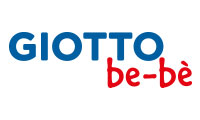
Weaning the minds of children as young as 2 years old. Created in 2004, the first complete line of products for drawing, colouring and modelling, designed to develop creativity with ease and in absolute safety, responding to the specific requirements of parents and their little ones.
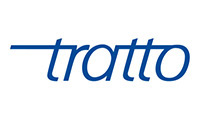
The mark of Italian writing. A line created at the beginning of the 1970s with two state-of-the-art products: Tratto Pen and Tratto Clip, winners of the prestigious award for design –Compasso D’Oro – in 1979. Since then, the range has been enhanced with a series of instruments for writing, highlighting and marking; a complete, modern range for school, office and free time.
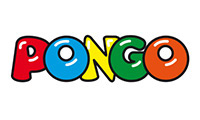
Since 1964, iconic brand and synonym of modelling paste, Pongo is a soft, coloured wax for modelling that is non-stick and allows the user to create coloured figures without having to decorate them. Pongo is an educational product, fun to play with, but also an extremely valid material for hobby-makers, artistic activities and crafts.
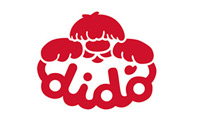
Playing is all-natural with the play dough made by safe ingredients designed for children as young as two years of age. Launched in 1984, Didò is an all-natural play dough designed as a specific modelling clay for the child’s first impact with this kind of material. Produced with ingredients sourced from food, Didò responds to the child’s needs to touch and feel, which are essential requirements for forming the senses.
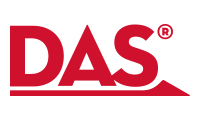
The DAS brand is an acronym of the name of its inventor – Dario Sala – who registered the patent in 1962. A synthetic paste that hardens in the air without baking, it is a modelling material with an almost infinite series of expressive possibilities, capable of meeting all technical requirements by favouring and at the same time stimulating the user’s creative freedom. It is known and used all round the world by children, hobby-makers and professionals of all ages.
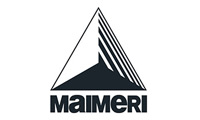
Legendary Italian brand created in 1923, designed by Gianni Maimeri, artist and founder of the company, based on a concept of absolute perfection. The Maimeri mark depicts a tetrahedron, a perfect prism in terms of its proportions, and unique because it always appears identical and points one corner upwards regardless of the viewpoint from which it is observed. The perfection incorporated in the symbol extends to all the Maimeri products, today representative of Italian excellence in the production of material for painting and drawing all over the world, and an example of the great passion and constant synergy between Art, Industry and Innovation.
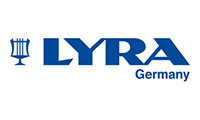
The origins of the Lyra brand date back to 1806 when Johann Froescheis began producing pencils in a factory in Nuremberg. In 1868, the symbol of LYRA was registered as a brand. The lyre is a musical instrument that accompanied the singers of that period. The reason why the Lyre was chosen remains a mystery but it was presumably because of the high quality of the pencils. This was symbolically associated with the perfection and purity of the sounds that this instrument allowed its player to achieve.
Lyra has been synonymous with innovation and excellence “made in Germany” for over 200 years and consists of a range of extremely high quality pencils and crayons with an innovative design. A varied, complete line with products for use in drawing and within artistic, technical and scholastic contexts.
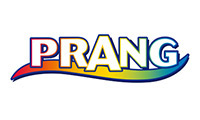
In 1897, Louis Prang was the founder of the Taber-Prang Art Company, which later merged with the American Crayon Company in 1931. Louis Prang was a world-renowned chromolithographer and art educator who introduced art education into the American school system along with countless inventions still used today. Prang is a brand that caters to the artist in all of us, including but not limited to colouring, painting and drawing.
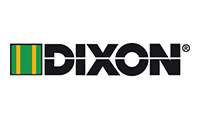
From the name of its founder, Mr. Joseph Dixon who manufactured the first wood and graphite pencil in the country along with many other highly accredited inventions. In 1827 Mr. Dixon established the Joseph Dixon Crucible Company in Salem, Massachusetts. Today, Dixon encompasses a full array of products ranging from writing and marking for school, office and industrial applications.
Launched in 1913, Ticonderoga represents one of the most powerful and recognized brands within the United States. Celebrating over 100 years of excellence with a rich iconic history. What once started with a powerful focus on graphite pencils has quickly evolved to a family of premium products ranging from writing instruments for school, office and personal use.
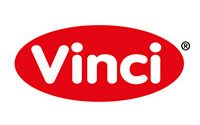
Vinci Mexico was founded in 1947 and purchased by the Dixon Group in 1997.
Initially, only temperas and complementary products were produced under the Vinci brand. Since then, the product portfolio has been widely diversified and enhanced with the introduction of coloured crayons, felt-tip pens, modelling clays, chalks and watercolours, becoming one of the best-known and best-loved brands for school instruments in the Mexican market.
Today the Vinci brand has also been further extended, to cover both artistic instruments and tools for decoration (Vinci Arts) in addition to didactic and educational materials (Vinci Fun Kids and Vinci be-bè)
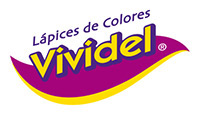
Brand registered in Mexico in 1977 and since then matched with coloured crayons and wax crayons.
Its forty year-long history and tradition make it one of the best known brands for children of school age.
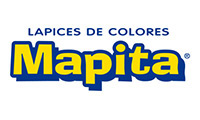
Originally named School Color, Mapita is an iconic brand of coloured crayons in Mexico. Since the early 1990s the packaging bears a stylised image of the geographical map of Mexico, which has made the product easy to recognise and extremely popular.
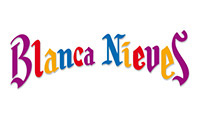
Synonymous with coloured pencils since 1944 when Manuel Espinoza Ardila, owner of the company Lapicera Mexicana purchased from the Dixon Group in 2010, launched them on the Mexican market. The power of this brand lies in the loyalty of its generations of consumers and in the volumes sold: almost 250 million pencils each year.
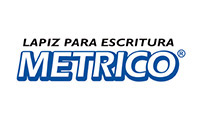
One of the most important brands of graphite pencils in Mexico and America.
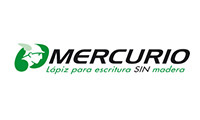
Legendary brand owned by Lapicera Mexicana, and since 2012 the perfect exemplary of a “wood free” pencil, entirely produced using tri-extrusion technologies on compounds made with plastic materials. A new line of wood-free pencils.
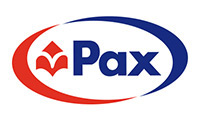
Pax graphite pencils, coloured pencils, modelling paste, glue and accessories are all used in Chile for drawing, colouring and creating.
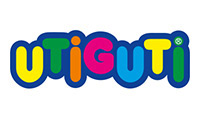
Created in Brazil in 1988, modelling clay, plasticine and temperas for school and home use.
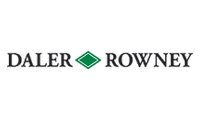
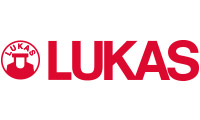
Since 1862 Lukas has always been regarded as one of the finest artists suppliers in the world providing supreme product quality. To this day countless artists including the like of Van Gogh, Baselitz or the Achenbach brothers have all come to trust the more than 150 years of tradition and innovation of the Lukas brand.
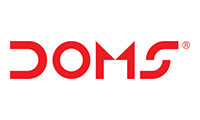
DOMS was launched in 2007 and today encompasses a full array of products ranging from writing, drawing and colouring mainly intended for school and office. DOMS represent one of the most active and fast growing product portfolio in continuous development in the Indian market.
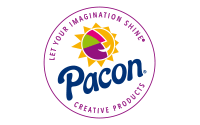
From construction paper to poster board, chenille stems to wiggle eyes, Pacon products inspire students, parents, and teachers to let their imagination shine. With trusted brands like Fadeless®, Bordette®, Tru-Ray®, Riverside® and Creativity Street®, our hands-on art, craft, and educational products stimulate creativity, discovery, and understanding.
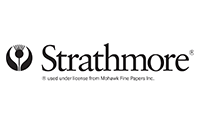
The history of Strathmore Paper Company began on St. Patrick’s Day in 1892 when its founder, Horace Moses, opened the Mittineague paper mill in West Springfield, MA.Strathmore® has been a leading supplier of fine art papers for over 125 years and was founded with the belief that better paper makes better art. Strathmore provides artists of all levels with one of the widest ranges of quality surfaces for producing beautiful works of art, no matter the choice of medium. Listening to the needs of artists and providing inspiration, education, and innovative new products is at the core of what matters to Strathmore.
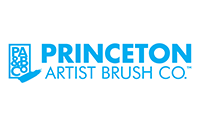
Princeton is the largest supplier of artist brushes in North America. In recent years, the company has also expanded its global presence. Founded only twenty-five years ago, it is the youngest among its competitors. Innovation has been the key to success. Princeton’s synthetic hair brushes are the industry standard. They are better performing, more affordable, and animal-friendly alternatives to natural hair brushes. Princeton continues to increase its market share by delivering exceptional service and offering creative merchandising solutions to retailers. Market opportunities, domestic and global, will be enhanced as we continue networking with influential artists and educators.
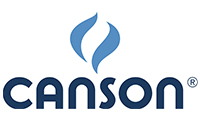
Since 1557, Canson offers high quality papers adapted to the needs of every target segment; from artists and design professionals to students and photographers. Whatever their experience, whatever their age, Canson’s wide range of products will satisfy their needs. Canson is the world-wide leader in Fine Art papers: Art is its core, its roots, its soul. It stimulates inspiration and become a source of enjoyment and memories that last forever.
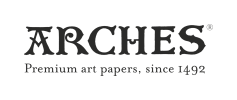
ARCHES® paper was born in the Vosges in 1492 and continues to be made there to this day. Arches is a small town in the heart of a historic papermaking region. Its products entirely “Made in France” are one of the main reasons why ARCHES® has earned the prestigious distinction of being named an “Entreprise du Patrimoine Vivant” (EPV) or Living Heritage Company, acknowledging its ancestral know-how in the manufacturing of high-end papers.
Since 1895, ARCHES® has made all its papers using a cylinder mould, a traditional process that produces very high-quality papers with deckle edges similar to handmade paper.
The famous 100% cotton paper ARCHES® Aquarelle paper, inimitable thanks to internal sizing with gelatin and air drying, is one of the jewels in the Arches paper mill’s crown.
A new international certification has recently rewarded ARCHES®‘s constant commitment to the protection of the environment and sustainable development: the ARCHES® range of papers now holds the Recycled Content Certification granted by SCS Global Services.

